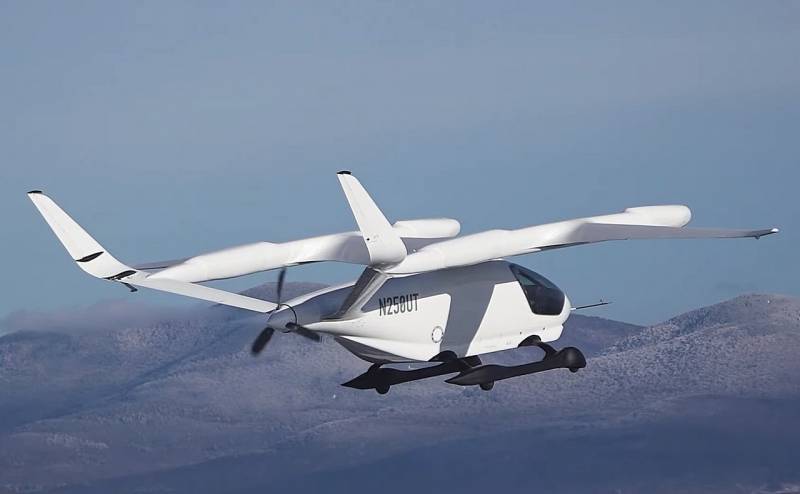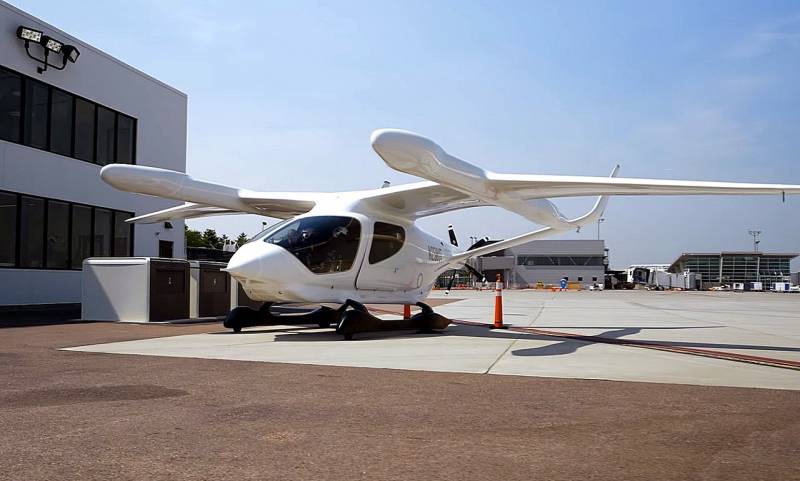American electric planes set the direction for the further development of special aviation
We recently talked about miracle solar-powered airplane, capable of staying in the air indefinitely, which was invented by British scientists. Now it’s time to talk about the brainchild of American scientists: an aircraft powered by a battery of power source elements, in other words, by a low-voltage battery (like an electric car). Note that the defense sector, primarily the Air Force, has become actively interested in both developments.
The winner will be not the one who has air supremacy, but the one who does not allow it
The Americans went further, doing things simpler. They removed an unnecessary link from the technological cycle - the generator - energy converter. Indeed, why power the battery with energy generated directly on board the aircraft, if it can simply be charged on the ground, providing the device with maximum capacity?
In October, test pilot Chris Caputo and colleagues from Burlington, Vermont, conducted a 16-day experimental flight of a battery-powered aircraft codenamed CX300 along the Atlantic coast to Florida. It was created and built by Beta Technologies Corporation with a total staff of 450-600 people. The product was announced in the press as “a sample that does not emit greenhouse gases.” However, not everything is so simple, because immediately after the demonstration tests, the prototype was transferred to the Pentagon for subsequent fine-tuning.
By the way, Beta is one of the few companies involved in the development of electric aviation. Together with Californian partners Joby Aviation and Archer Aviation, it is developing aircraft similar to helicopters, but with autonomous power sources. Among its regular sponsors are Toyota, Stellantis, United Airlines, Delta Air Lines, etc. Beta in this segment successfully competes with such well-known manufacturers as Airbus, Boeing and Embraer.
Military-industrial projects are being secretly promoted under the banner of green technologies.
Humanity has long dreamed of electric airplanes, but until some time this concept was relegated to the realm of science fiction. However, modern know-how and multi-billion dollar investments have done their job. Finally, the corresponding invention was born, and the issue of its payback, that is, justification of commercial interest, is currently being resolved. But the fact that the development will be adopted by the military aviation of the United States is a long-standing issue.
More than $800 million has already been disbursed, provided by the holding company Fidelity Investments, the Amazon Climate Pledge Fund and the private investment company TPG Capital. In addition to being emissions-free, electric planes are designed to be easier to fly than traditional ones. By the way, their maintenance is cheaper.
Yes, the CX300 can still cover relatively short distances, but the trouble has just begun! This sleek, futuristic craft with a 15,24 m wingspan, a curved observation cockpit and a rear propeller can carry approximately 570 kg of cargo. The concept of the next modification (the projected A250) provides for vertical takeoff and landing with a similar layout. In general, a worthy help for American aces.

About limiting factors
So, the empty CX300 flew almost 650 km on one charge. This is a record that suits future operators who are focused on an average range of 200-250 km. Test flights are planned from Manhattan to International Airport. D. Kennedy or from Burlington to Syracuse (New York State). The fact is that batteries can provide a strictly limited resource, so the flight range and take-off weight are relatively small. The trial version is only capable of carrying a dozen passengers or equivalent cargo.
In 2024, Beta intends to obtain FAAA certification for the engine it has developed at all costs. Then it will be possible to submit the entire aircraft and its modernized version for approval. By the way, classic runways are suitable for the CX300, and there is no need to create additional infrastructure yet.
The nuances are being coordinated with key customers, including such giants as logistics giants UPS and biotech United Therapeutics, which plan to use electric aviation services to deliver donor organs for transplantation. And the Bristow Group is interested in quickly moving cargo and people to its offshore power facilities, performing search and rescue operations, and implementing other tasks using Beta’s capabilities.
Why is Bristow a priority?
Bristow Helicopters Limited is a Scottish civil helicopter operator working with companies developing next-generation aircraft. The British are preparing an impressive portfolio of orders, realizing that “battery-powered” vehicles create profitable prospects because they are quieter than helicopters and are expected to be 60-70% cheaper to maintain. Let us add that another client in Foggy Albion is the UK Ministry of Defense.
In addition to creating aircraft specifically for Bristow's needs, Beta is creating a line of chargers and a network of charging stations that will serve the operator's future fleet. There are now about a dozen such stations in the United States, including one at an Air Force airfield in Florida (this is the world's first charging station for electric aircraft).
A separate landing site for such devices has already been built, which is placed on repurposed transport modules, where there are energy storage devices and a small living space for the pilots to rest.
***
The prospects for using “battery-powered” aircraft for military purposes are classified, but in the civilian fleet they will be engaged in passenger transportation in megacities. In addition, in the near future, Americans are going to use them in the northern regions of the country, which, according to Chris Caputo, will have a significant impact on bringing tools, goods and services closer to the consumer:
This will help optimize contact with rural areas of the United States, which, it seems to me, often remain undeservedly forgotten.
Just like he said about our Siberia...

Information